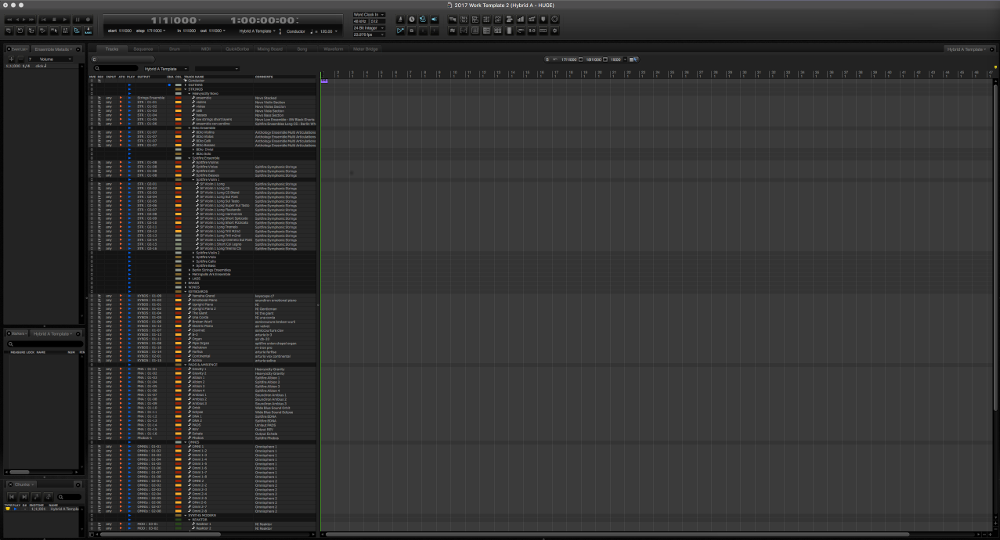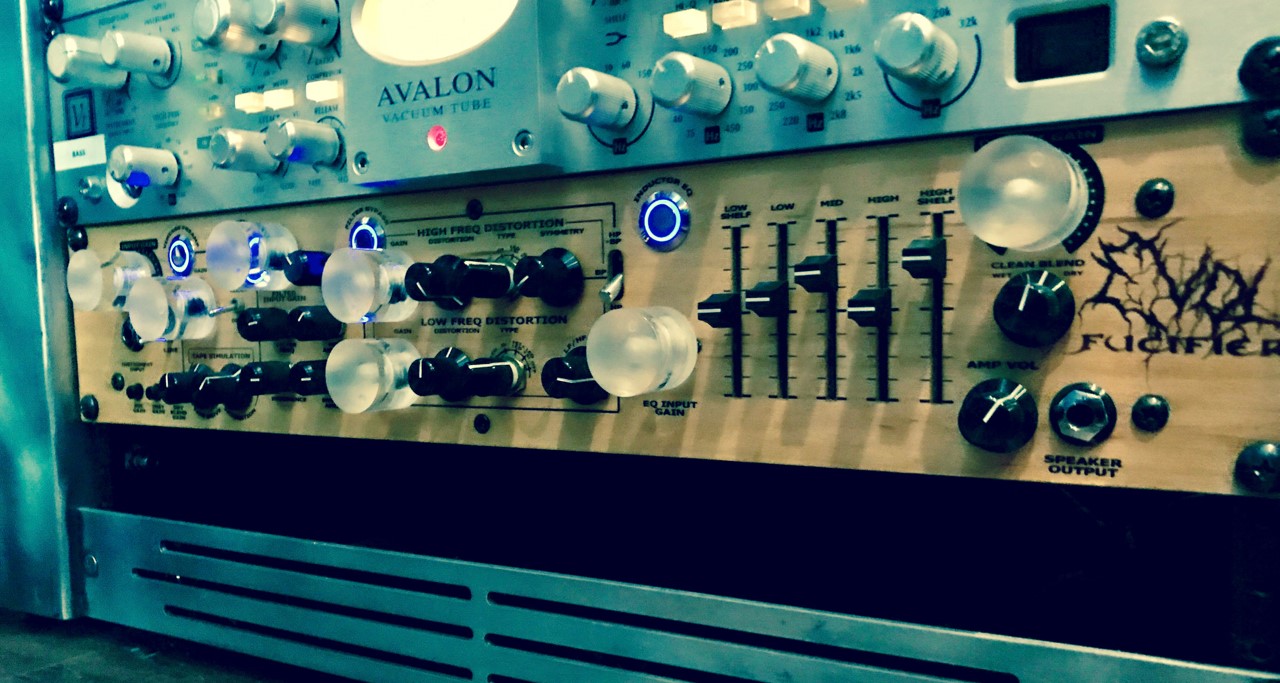How to Make Sizzling Hollywood Strings: Pro Scoring Tips from “Underworld” Composer Michael Wandmacher
Scary good. If that’s the wavelength that your movie is on, then composer Michael Wandmacher is your man.
Just take a listen to his work on cinematic hits like Underworld: Blood Wars, and you’ll see what we mean. In the soundtrack preview, you can count on the Los Angeles-based Wandmacher to take your ears on a deep ride. Working out of his unique Encino studio, he’s capable of scores that are enveloping, riveting and extremely seductive. Did we mention driving, rhythmic, emotional, beautiful, haunting and totally hair-raising as well?
We could go on with the adjectives, but Wandmacher’s credits are the next place to look. Recent major films include Punisher: War Zone, Drive Angry, and My Bloody Valentine, the video games Twisted Metal and Bloodborne, plus he’s on TV with ABC’s “The Goldberg’s.” Another 2017 highlight includes being World Soundtrack Award-nominated for Voice From the Stone, for which he also co-wrote the epically moving end theme song with Evanescence’s Amy Lee.
It’s a picture-perfect profile of a Hollywood composer who’s made in the shade. But ask this Minnesota native if he feels like he’s arrived, and his humble reply sounds more like a musician who’s just getting started.
“I feel really grateful for the work that I’ve had,” Wandmacher says. “It’s a very tough business to succeed in. It’s extremely competitive. I’m glad to have accomplished what I have so far, but there’s always other things that I want to do – different types of movies, games, and genres. As a creative person, I’m always looking for the next challenge. I never want to get bored or stale.
“From a technological standpoint, I always want to keep it interesting. I try a lot different recording techniques, new plugins, and utilize them in a way to create a score that’s emotionally and musically meaningful.”
The Lego Desk
Wandmacher’s creative springboard is his ergonomic suite. Collaborating with set designer David Weinberg, the composer created a highly flexible desk that doesn’t just look unusual – it has some superhero capabilities all its own.
“All the parts are custom-fabricated,” Wandmacher says. “David did all the finishes himself, and every bolt, screw, and rivet was hand-painted. It was quite an undertaking. This desk was built from scratch for me: It’s designed to accommodate my body, my equipment, and have everything laid out in a way that makes the most sense for me.
“There was a lot of consideration in terms of profile, keeping it low and at the right height. Everything is within arm’s reach. It’s all about keeping everything as efficient and quick as possible.”
The desk forms an industrial-strength pod that surrounds Wandmacher. As burly as it looks, it can also be broken down and rearranged in the blink of an eye. “It’s set up so it can be pulled apart like a Lego set,” he explains. “Everything is channeled in a specific way, so if any repair or technical work is needed, the desk can be quickly disassembled so that the correct part is sitting right there in front. We thought about every detail, and it makes the work so much faster.”
This need for speed doesn’t just come from the deadline-driven impulse to beat the clock. It’s just as much about keeping Wandmacher in his creative zone.
“It keeps everything right where I’m sitting,” he confirms. “The things I use the most are right in front of me, and it’s ergonomically really comfortable, so I can work for long periods of time. The monitor height is very important, so I don’t get eye or neck strain. Everything is in front of my chair in a straight line that I can reach, and pull elements I need for the music as quickly as possible. If I need a guitar part I can grab a guitar, plug into the preamp, and start playing. I never have to worry about the setup.”
Great Templates
If all that sounds like Wandmacher has the joy of making music nonstop, his next obsession will bring you back down to earth. One way he’s able to dial up those huge sounds is by constantly building meticulous templates for hours, days, or even weeks at a time.
Wandmacher retweaks his orchestral template religiously, updating it once a month to build in new sounds or articulations that he expects will be useful. His templates are set up mainly to streamline his writing activities, but they’re also laid out with orchestration and live players in mind.
“When I’m actually composing music, the idea is to circumvent as much mumbo jumbo as possible, and keep the creative process going,” he says. “Today’s sample libraries are so huge, with every possible articulation for every instrument, that it’s a constant battle to find sounds. There are composers out there with templates that are thousands of tracks. The one I use for electronic music is almost bigger than the ones I use for orchestra, although they’re balancing out now.
“Tweaking a template can take an entire day, while setting up an initial template can take a couple of weeks to have it all makes sense, sound good, and run efficiently on computers. There’s lots of little details that have to be addressed before it all works seamlessly. Every once in a while my work gets done early, or I’ll set aside a day and monkey with the template the whole day. I also take notes as I go while I’m actually working, noting that I want to change a particular sound, and how its routed and bussed into Pro Tools. Then I’ll go back and work through the list. It’s never-ending!”
Into the “Underworld”
A perfect example of the magic wand that Wandmacher waves is his work on Underworld: Blood Wars, where you can hear strings going above and beyond the ordinary orchestra.
“Achieving the sound of that string section was interesting,” he notes. “In addition to using real strings, they’re layered with sampled strings that are run through distortion units. It’s all blended together so you get the organic grittiness and humanity of real players. You can’t do that with samples – real players make all the difference.
“But I also wanted to get this heavy, dark, biting texture with the strings in the action sequences. I took all the string parts, made ensemble string patches from multiple libraries, then ran all of that, through various hardware distortion units and plug-ins, then layered it with the real strings. That made it feel more aggressive and sharp, to fit the canvas of the movie.”
The practice highlights his preference for incorporating album production techniques into a score. “I use distortion on a lot of things – it adds a heavy, aggressive layer to stuff,” says Wandmacher. “When you use different types of distortion and tape saturation, very common sounds take on a whole new character, bringing out new aspects of their timbre, tone and color. They get flipped from what you’re normally doing.”
Wandmacher points to iZotope Trash and FabFilter Saturn as his favorite plug-ins. Meanwhile, his secret weapon on the hardware side is the Evol Fucifier distortion synthesizer, now available pretty much exclusively on eBay.
“That’s a real esoteric unit which, in my opinion, is the best hardware distortion you can get,” he says. “It’s this really wild-looking thing, and it’s made purely for shaping distortion. I use that for everything: guitars, basses, keyboard. It just changes the character of the sound, makes it more interesting, and opens up a whole new pallet of possibilities.”

Be Like Mike…On a Budget
Ready to arrive yourself, Wandmacher-style? If you don’t have the funds to fork over on an incredible custom setup in L.A., the accomplished composer has a suggestion for where emerging music-for-picture mavens should put their money first.
“Get a great chair,” he urges. “The chair is where you spend the majority of your time. A lot of people are getting standing desks, but that’s hard to do with music gear – there’s so much that has to go on the desk, and it’s hard to move it up and down.”
Wandmacher is no studio snob, pointing out that micro mobile packages are capable of massive results. “A lot of people are working on laptops, and you don’t need huge monitors anymore because bookshelf speakers are extremely efficient,” he says. “There’s smaller MIDI controllers that you can use for input, at every budget level. You can definitely find something that will accommodate how you’re working.”
There is a department where one should go above and beyond, however. “Get as good a microphone and preamp as you can afford – that stuff is worth what you pay for it,” states Wandmacher. “But I’ve seen people work miracles on the most basic laptops or tablets. There’s great technology available everywhere at an affordable price. Logic has everything you need to make finished tracks, and it’s $200.
“When I was 15, you had to spend hundreds of thousands of dollars to get the technology that’s in GarageBand, which now comes bundled with your computer. I would have freaked out if I had that when I was coming up! Younger musicians may take that for granted, but these tools are extremely powerful.”
– David Weiss
Please note: When you buy products through links on this page, we may earn an affiliate commission.










